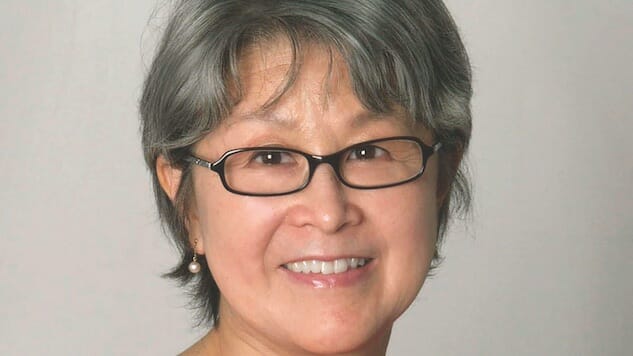Lynne Kutsukake Explores Hope Amidst Japanese-Canadian Repatriation in The Translation of Love
Photo by Edmond Lee
In the history of the 20th century, the internment of Japanese-Americans following the 1941 attack on Pearl Harbor stands out as a shameful period for U.S. democracy. But the U.S. was not alone in their treatment of citizens of Japanese descent. Canada also instituted the large-scale internment, though they took the matter one step further than the U.S. In 1946, 4,000 Japanese-Canadians were repatriated to Japan, forcing them to uproot their lives and move to a country experiencing extreme hardship and turmoil.
What was that experience like for the thousands of men, women and children working to build new lives in the aftermath of World War II? In her new novel, The Translation of Love, Lynne Kutsukake explores this time in Japanese and Canadian history through the eyes of the people living during this challenging post-war transition.
The narrative centers around two young girls: Aya Shimamura, who has lived her whole life in Canada but is repatriated to Japan with her father, and Fumi Tanaka, a Tokyo native who takes Aya under her wing and is searching for her missing sister. Together, the girls attempt to contact General MacArthur, launching them on a journey through post-war Japan’s complex reality.
Paste chatted with Kutsukake to discuss the history behind the novel, her own relatives’ experience with repatriation and hope amidst grim conditions in an occupied Japan.
![]()
 Paste: Can you share some of the historical context for the novel?
Paste: Can you share some of the historical context for the novel?
Kutsukake: In the period right after the end of the [Second World War], 4,000 Japanese-Canadians were repatriated to Japan. Just before the war ended, the Canadian government gave the Japanese-Canadians who were in internment camps in British Columbia only two choices. One was to move east of the Rocky Mountains and to disperse, so as not to form a community. The other was to go to Japan. It was a time of great confusion and, obviously, panic. Many of them weren’t given very much time to make this decision, and a lot of families didn’t know what to do. It was pretty emotionally traumatic, I think.
I wanted to write about the early period, because during that early period in Japan, conditions were grim. There were severe food shortages, especially in urban areas. If you lived in the city, you relied on food being brought in. The rationing system had broken down. If you had only eaten the amount of food you were allowed under the ration system, you would have starved to death. And so everyone had to rely on other methods of getting extra food, especially the black market.
Paste: You are a third generation Japanese-Canadian. How did your own connection to this part of Canada’s past shape the story?
Kutsukake: I was born after the war, but my mother and my father were born in Vancouver. They didn’t know each other at the time, but each of them had gone to internment camps in British Columbia. But my grandparents on my mother’s side [were repatriated] to Japan. Two years after arriving, my grandfather died, and then a few years later, my grandmother had to be brought back to Canada.
The story is entirely fiction, but I have this connection to this particular part of history that I don’t think many people know about. I think most people are quite familiar with the internment of Japanese-Canadians and Japanese-Americans. But in the case of Japanese-Americans, they were allowed to return to the west coast. It wasn’t easy. There was a lot of discrimination and many of them were going back to absolutely to nothing at all. But they were legally able to return to the west coast, to where they came from.
-

-

-

-

-

-

-

-

-

-

-

-

-

-

-

-

-

-

-

-

-

-

-

-

-

-

-

-

-

-

-

-

-

-

-

-

-

-

-

-








































